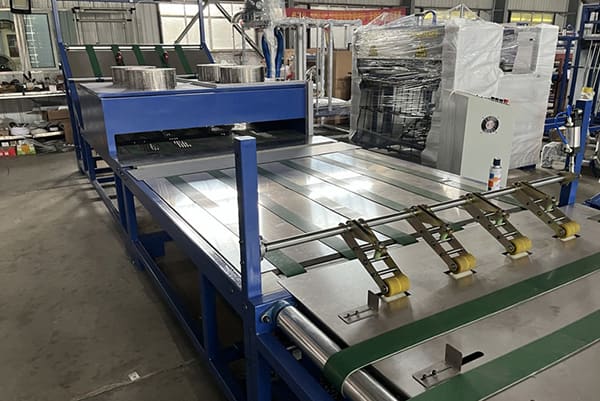The textile and packaging industries are continually evolving, seeking innovations that enhance efficiency, precision, and productivity. One of the most significant advancements in this realm is the computerized FIBC fabric cutting machine. This cutting-edge technology has transformed the way flexible intermediate bulk containers (FIBCs) are manufactured. But what exactly is a computerized FIBC fabric cutting machine, and how is it reshaping the industry?
Understanding FIBC Fabric Cutting
FIBCs, also known as bulk bags or big bags, are large woven containers used for storing and transporting bulk materials such as grains, chemicals, and construction materials. The manufacturing of these bags requires precise cutting of robust, heavy-duty fabric to ensure durability and safety. Traditional manual cutting methods are time-consuming and prone to errors, leading to material waste and inconsistent product quality.
The Role of Computerized FIBC Fabric Cutting Machines
A computerized FIBC fabric cutting machine is a specialized piece of equipment designed to automate the cutting process of FIBC materials. These machines utilize advanced computer-aided design (CAD) software and precision cutting technologies to deliver accurate, efficient, and consistent cuts. Here’s a closer look at how these machines operate and their benefits.
Key Features and Technologies
- Computer-Aided Design (CAD) Integration
Computerized FIBC fabric cutting machines are equipped with CAD software that allows operators to create detailed cutting patterns and designs. These digital designs are then fed into the machine, which translates them into precise cutting instructions. This integration ensures that each cut is consistent with the design specifications, reducing errors and improving overall product quality.
- Precision Cutting Technologies
These machines employ various cutting technologies to handle the tough, woven fabrics used in FIBC production:
- Blade Cutting: Utilizes high-speed rotary or straight blades to slice through thick fabric. Blade cutting is effective for producing clean, straight edges and can handle multiple layers of fabric simultaneously.
- Laser Cutting: Uses a focused laser beam to cut through fabric. Laser cutting is highly precise and can create intricate shapes and patterns. It also seals the edges of synthetic fabrics, preventing fraying.
- Ultrasonic Cutting: Employs high-frequency vibrations to cut fabric without generating heat. Ultrasonic cutting is ideal for delicate or heat-sensitive materials and produces smooth, sealed edges.
- Automated Material Handling
Computerized FIBC fabric cutting machines are equipped with automated material handling systems that ensure the fabric is fed smoothly and consistently into the cutting area. Features such as conveyor belts, vacuum suction, and tension control mechanisms help maintain fabric alignment and prevent misfeeds, resulting in precise cuts and reduced material waste.
Benefits of Computerized FIBC Fabric Cutting Machines
- Enhanced Precision and Consistency
The integration of CAD software and precision cutting technologies ensures that every cut is accurate and consistent. This precision is crucial for maintaining the structural integrity and safety of FIBCs, which must meet stringent industry standards.
- Increased Efficiency and Productivity
Computerized FIBC fabric cutting machines significantly speed up the cutting process, reducing the time required to produce each batch of FIBCs. This increase in efficiency allows manufacturers to meet high production demands and tight deadlines more effectively.
- Material Optimization and Waste Reduction
By utilizing advanced cutting patterns and automated material handling, these machines maximize fabric utilization and minimize waste. This optimization not only reduces costs but also promotes more sustainable manufacturing practices.
- Versatility and Flexibility
These machines can handle a wide range of fabrics and cutting patterns, making them highly versatile. Manufacturers can easily switch between different designs and materials, allowing them to adapt quickly to changing market demands and customer specifications.
- Improved Workplace Safety and Ergonomics
Automating the fabric cutting process reduces the need for manual labor, minimizing the risk of repetitive strain injuries and accidents. This improvement in workplace safety and ergonomics contributes to a healthier and more productive working environment.
Conclusion
In conclusion, the computerized FIBC fabric cutting machine is a revolutionary advancement in the textile and packaging industries. By combining CAD integration with precision cutting technologies, these machines offer unparalleled accuracy, efficiency, and versatility in the production of FIBCs. As the demand for high-quality bulk packaging solutions continues to grow, the adoption of computerized FIBC fabric cutting machines is set to become a standard practice, driving innovation and excellence in the industry. For manufacturers aiming to stay competitive and meet the highest standards of quality and efficiency, investing in this technology is a strategic and forward-thinking decision.
Post time: Aug-07-2024


